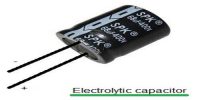Working Process of transformer
A transformer consists of primary and secondary coils insulated from each other, wound on a soft iron core. To minimise eddy currents a laminated iron core is used. The a.c. input is applied across the primary coil. The continuously varying current in the primary coil produces a varying magnetic flux in the primary coil, which in turn produces a varying magnetic flux in the secondary. Hence, an induced emf is produced across the secondary.
Let EP and ES be the induced emf in the primary and secondary coils and NP and NS be the number of turns in the primary and secondary coils respectively. Since same flux links with the primary and secondary, the emf induced per turn of the two coils must be the same
EP/NP = ES/NS
or, ES/EP = NS/NP … … (1)
For an ideal transformer, input power = output power
EP IP = ES IS
where IP and IS are currents in the primary and secondary coils.
ES/EP = IP/IS … … (2)
From equations (1) and (2)
ES/EP = NS/NP = IP/IS = K
where k is called transformer ratio.
(for step up transformer k > 1 and
for step down transformer k < 1)
In a step up transformer ES > EP implying that IS < IP. Thus a step up transformer increases the voltage by decreasing the current, which is in accordance with the law of conservation of energy. Similarly a step down transformer decreases the voltage by increasing the current.












